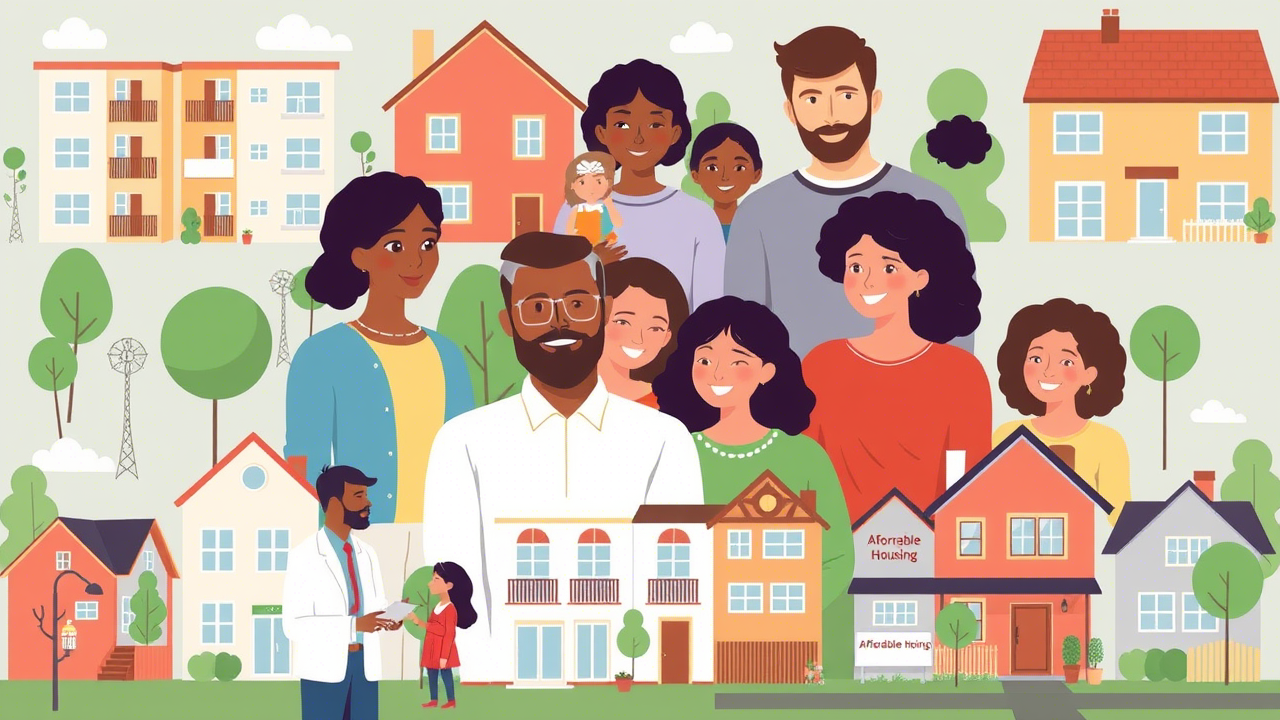It’s pretty much like having a house that costs Sarah a good two jobs to facilitate but still ends up not able to pay rent. She spends hours of worry every month, hoping that she can pay because it’s real for millions. Affordable housing is very important. It can alleviate some financial strain and give individuals an actual place to call home. In this essay, we will explore what affordable housing actually means, what makes it a tough ask, and what options are available.
What is Affordable Housing Really?
Affordable housing is not simply defined as really cheap rent, but rather a measure of how well the costs of housing stack up to your income.
Defining Affordability: The 30 Percent Rule
The golden rule? Never let your housing costs exceed thirty percent of your gross income. Gross income is simply what you earn before taxes come into play. If you make $2000 a month, you are ideally looking at rent-plus-utilities below $600. Someone who brings $4000 should look to $1200 or lower. It’s just better on the whole to work within these confines.
Beyond Rent: What Housing Costs Include
“Housing costs” goes beyond rent. It means everything you consumption in your house: utilities such as electricity, water, and gas. For homeowners, there are property taxes and insurance. Don’t forget hidden costs like transportation, though. A cheaper apartment far from work could mean higher commuting costs. They add up.
The Increased Need for Affordable Housing
This is just an emission of steadily rising need for affordable housing. And many more linked things are responsible for this.
Income Jongle and Stagnancy in Wages
The gap between income and prices in housing keeps widening. Wages have traditionally stuck behind rapidly increasing rents. This is difficult, which means that many families can’t really afford to find suitable places.
Urbanization versus Reduced Housing Supply
Cities are sprawling. More and more people are migrating to urban areas. This scarcity in housing units does not grow simultaneously. This, therefore, increases price levels as a third competition in the area.
The Effects of Policy and Zoning Regulations
Local zoning codes often limit the type of housing that will be constructed. Some areas of the community only allow single-family homes; they limit apartment construction, and these regulations have further contributed to affordable housing being in short supply.
Affordable Housing Different Types of Programs and Options
Dandy programs were developed to assist individuals to identify the most affordable locations for living. Here are some of the most significant among them:
Government Subsidized Housing (Section 8/Housing Choice Vouchers)
Known as Housing Choice Vouchers, this housing program subsidizes a portion of rent for low-income households based on income size and family composition. However, the voucher can be spent on private rental agreements with landlords.
Public Housing
These are state-owned and managed by local housing authorities. Rent is calculated based on income. For application processes, contact your local public housing authority.
Tax Credit Programs (LIHTC)
The Low-Income Housing Tax Credit (LIHTC) encourages people to develop housing. It gives tax breaks to developers for the purpose of building affordable housing units. These units rent at reduced rates to those who apply and qualify.
Inclusionary Zoning
A number of cities have inclusionary zoning to ensure that any new development has low-income units within it. It ensures that there is economic diversity within a community.
Community Land Trusts
Buyers will buy their homes, but the land will belong to the CLT. This arrangement is intended to keep homes affordable. Housing costs will be detached from the cost of the land.
General Barriers to Affordable Housing Access
Finding affordable housing is a tough nut to crack. Now a whole array of hurdles stand in the way.
Deep Waiting Lists and Unavailability
Program lists like Section 8 can have wait lines that shift from deep to longer without an end in sight. Sometimes, lines run into a couple of years. Demand will continue to exceed available supply.
The Stigma and Discrimination
There are several negative connotations attached to affordable housing. Some landlords discriminates against the voucher holders in such a way that they make it so difficult for them to find the right place to call home.
Tangled Application Process
The whole process of applying for affordable housing can feel very complicated. The paperwork is a nightmare. The regulations are confusing. Hence, it makes it much difficult for applicants to figure out how to get through such a process.
Ways to Find and Obtain Affordable Housing
These tips are helpful for you if you need to find affordable housing.
Research Local Resources and Programs
You can start with your local government-to-county housing authorities. Oftentimes, these agencies maintain lists of available programs. You can also visit local nonprofits for assistance.
Improve Your Credit Score
When you have a good credit score, you have more options for housing. Most landlords want to access your credit score to approve your request.
Network and Seek Assistance
Get in touch with housing counselors and advocates. They will provide insight on who you should contact for financial assistance and access. You will also get directions on how to maneuver the entire application process.
Conclusion
Affordable housing is important. It affects both individuals and communities. The search for and acquisition of affordable housing is a tough but critical journey. Making a difference in affordable housing initiatives makes a difference. Let’s work for policies that will expand access. Safe, affordable homes are the basis of better lives.



